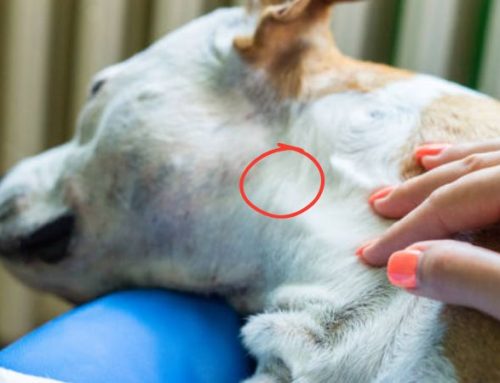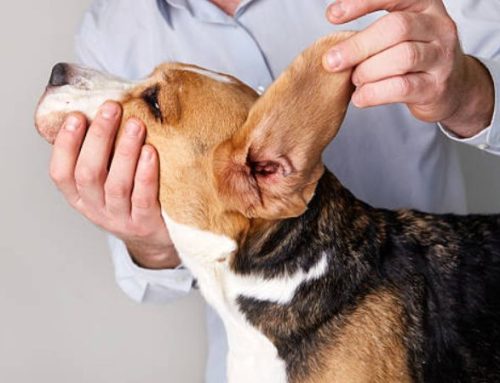That constant licking, scratching, or nibbling your dog does? It’s not just a quirky habit—it could be their way of crying out for help. Beneath the fur, your pup may be dealing with itchy bumps, crusty patches, or painful pustules that signal something’s not quite right.
In this guide from Nexus-Pets, we’ll dive into what those mysterious skin issues mean, what symptoms to watch for, and how to help your furry friend find sweet relief.
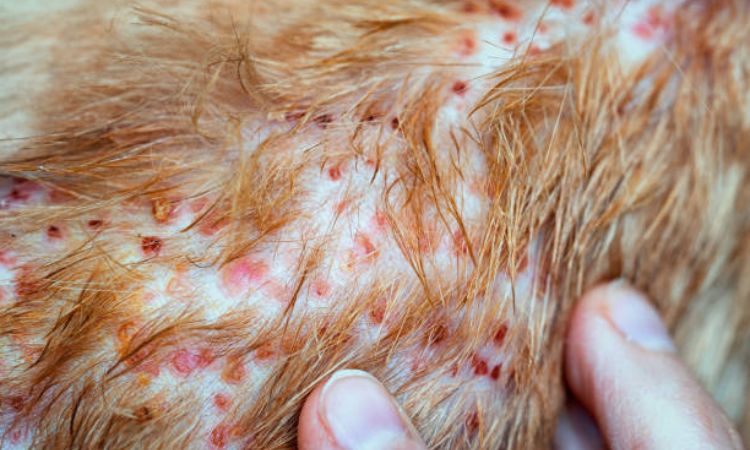
What Are Dog Skin Bumps and Pustules?
Skin issues in dogs can show up in many ways — including bumps, pustules, papules, and cysts. Here’s what they mean:
- Bumps: General term for any raised area on your dog’s skin.
- Papules: Small, solid red or pink bumps without pus.
- Pustules: Red, inflamed bumps filled with pus — usually caused by infection (like bacteria or fungi), allergies, or skin irritation.
- Cysts: Fluid-filled sacs beneath the skin, often soft to the touch.
Not all bumps are dangerous:
- Benign lumps (like lipomas or warts) are non-cancerous and usually harmless.
- Malignant lumps may indicate serious issues like cancer and require immediate veterinary attention.
If you notice new or unusual skin changes on your dog, especially those that grow, ooze, or cause discomfort, it’s best to have them examined by a vet.
Common Causes of Skin Bumps and Pustules in Dogs
Skin bumps and pustules in dogs can stem from a variety of underlying issues. Understanding the root cause is essential for proper treatment. Below are the most common culprits:
- Bacterial infections: Conditions like pyoderma and impetigo are caused by bacteria and often lead to pustules — red bumps filled with pus that may crust over.
- Allergic reactions and irritants: Dogs can develop skin bumps due to allergies to food, pollen, flea bites, or contact with household chemicals. These reactions may cause itchy, inflamed, or raised areas.
- Parasite bites and infestations: Fleas, mites, and ticks can trigger localized bumps, pustules, and even secondary infections from scratching. Mange (caused by mites) is a common example.
- Clogged oil glands (sebaceous cysts): These are non-cancerous lumps formed when oil glands become blocked, leading to a soft or firm bump beneath the skin.
- Viral infections: Canine papillomavirus causes wart-like growths, typically around the mouth or on the paws. These can sometimes resemble pustules or small tumors.
- Tumors and growths: Not all bumps are benign. Lumps such as lipomas (fatty tumors), mast cell tumors, or histiocytomas may appear as raised nodules and should be evaluated by a vet.
Besides Infected bites, scratches, or injuries can lead to painful swellings filled with pus — often accompanied by redness, swelling, and heat.
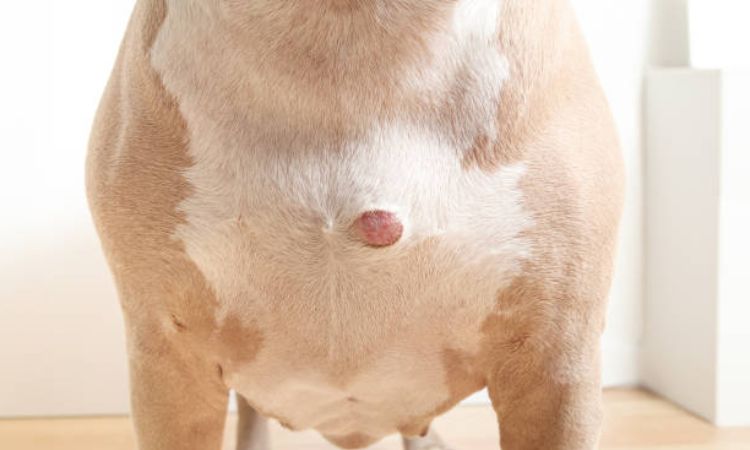
Symptoms to Watch For
Recognizing skin problems early can make a big difference in your dog’s comfort and recovery. Keep a close eye on both visible signs and behavioral changes. Dogs with skin bumps or pustules often show a combination of symptoms, ranging from minor irritation to more serious, systemic issues. Here’s what to look out for:
- Red or raised bumps with white, pus-filled centers (pustules)
- Circular crusts, scabs, or flaky patches of skin
- Frequent itching, scratching, or licking the affected areas
- Hair loss or a patchy coat around irritated spots
- Swelling, pain, or ulceration (open sores) on the skin
- Unpleasant odor from the bumps or lesions
- General symptoms such as:
- Fever
- Lethargy or depression
- Loss of appetite
If you notice any of these signs, especially if multiple symptoms appear at once, it’s important to consult your veterinarian for an accurate diagnosis and timely treatment.
Diagnosis
Proper diagnosis is essential to determine the cause of your dog’s skin issues and ensure effective treatment. Veterinarians rely on a combination of visual inspection and diagnostic tests to uncover the underlying problem.
Physical Examination by a Veterinarian
The process begins with a thorough hands-on examination. A vet will carefully assess:
- The size, shape, texture, and location of the bumps or pustules
- Whether the lesions are painful, inflamed, or producing discharge
- Any signs of systemic illness such as fever, lethargy, or appetite changes
Diagnostic Testing
To pinpoint the cause, your vet may perform one or more of the following tests:
- Fine Needle Aspiration (FNA): A small sample of cells is extracted from the lump using a thin needle and examined under a microscope to evaluate its nature.
- Skin Scraping: Helps detect parasites such as mites that may be causing the irritation.
- Biopsy: A tissue sample may be taken and sent to a lab if a more detailed analysis is needed—especially when malignancy is suspected.
Differentiating Benign vs. Malignant Lumps
One of the most important parts of diagnosis is determining whether a lump is harmless or potentially cancerous. While many bumps are benign (like lipomas or sebaceous cysts), others—such as mast cell tumors—require immediate attention.
Identifying Underlying Causes
In addition to examining the lumps themselves, your vet will consider other possible causes such as:
- Allergies (environmental, food-related, or contact-based)
- Bacterial, viral, or fungal infections
- Parasitic infestations like fleas or mange mites
A comprehensive diagnosis ensures your dog receives the most appropriate treatment—and gives you peace of mind knowing the real issue is being addressed.
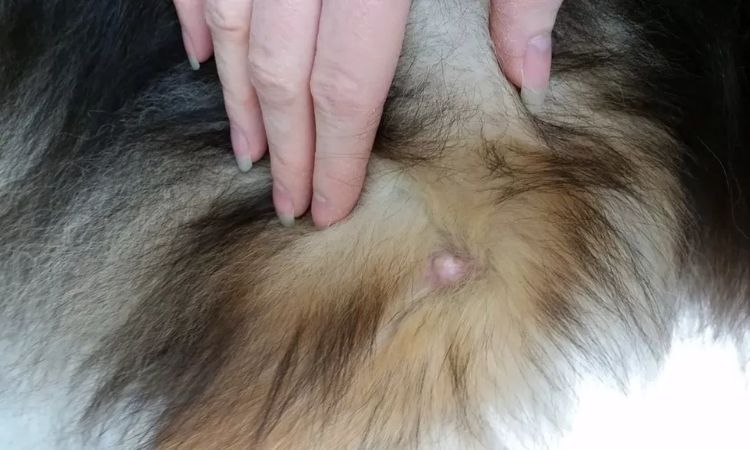
Treatment Options
When your dog develops bumps or pustules on their skin, the appropriate treatment depends on the underlying cause. A veterinarian will first diagnose the issue before recommending the best course of action. Here are common treatment approaches based on different conditions:
Antibiotic Therapy
If a bacterial infection such as pyoderma or impetigo is diagnosed, antibiotics are often prescribed. These can be:
- Topical antibiotics applied directly to the affected area to target localized infections.
- Oral antibiotics for more widespread or severe infections, ensuring the bacteria are fully eradicated.
Prompt antibiotic treatment helps resolve infections and prevents complications.
Anti-Inflammatory Medications
For skin irritation caused by allergies or immune responses, anti-inflammatory drugs play a crucial role:
- Corticosteroids reduce redness, swelling, and itching, providing relief to your dog.
- These medications may be administered orally, by injection, or as topical creams depending on the severity and location of the irritation.
Managing allergies also involves identifying and avoiding triggers to minimize flare-ups.
Antifungal Treatments
If fungal infections are identified, specific antifungal medications will be used. These may include:
- Topical antifungal creams, shampoos, or sprays applied to the affected areas.
- Oral antifungal drugs in cases of more extensive infection.
Effective treatment requires following the vet’s instructions closely, as fungal infections can be persistent.
Surgical Intervention
Some lumps and cysts may require surgical removal, especially if:
- They are large, painful, or infected cysts that don’t respond to medical therapy.
- Tumors, whether benign or malignant, need to be excised to prevent growth or spread.
Surgery is often combined with biopsy to determine the exact nature of the lump and guide further treatment if necessary.
Abscess Management
Abscesses—pockets of pus caused by infections—usually require:
- Drainage to remove the accumulated fluid and relieve pressure.
- Cleaning of the wound to prevent further infection.
- Antibiotics may also be prescribed to clear the underlying bacterial infection.
Early intervention is important to avoid pain and systemic illness.
Supportive Care
Alongside specific treatments, maintaining good skin health is vital:
- Medicated shampoos help cleanse the skin, reduce itching, and treat superficial infections.
- Proper hygiene including regular grooming can prevent buildup of dirt and bacteria.
- Environment management such as controlling parasites, minimizing allergens, and keeping your dog’s living area clean helps reduce skin problems.
Regular check-ups and attentive care are key to keeping your dog’s skin healthy and comfortable.
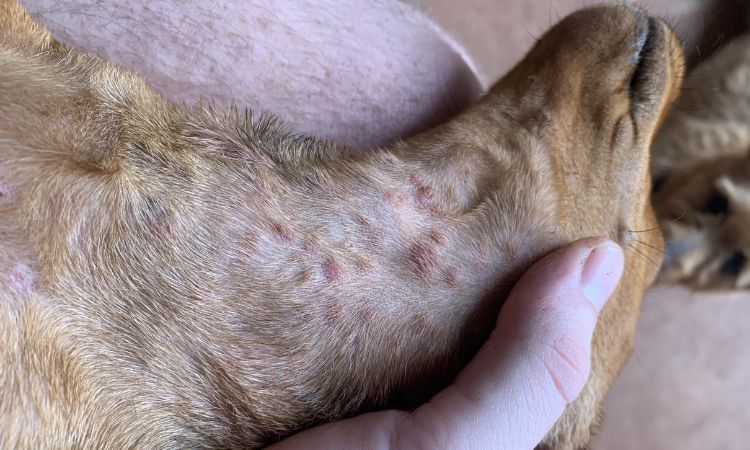
When to See a Veterinarian?
You should take your dog to the vet right away if you notice any bumps or lumps that grow quickly, become painful, bleed, or develop open sores. Also, if your dog shows signs of feeling unwell—like fever, unusual tiredness, or loss of appetite—along with skin issues, prompt veterinary care is essential.
Skin problems that persist, return repeatedly, or don’t respond to basic care should never be ignored. Lastly, if you suspect a lump might be cancerous, early professional evaluation is crucial to provide your dog with the best chance for successful treatment.
While alarming, canine skin bumps and pustules are often treatable. This guide has explored their diverse causes, from common infections and allergies to less frequent issues like parasites or tumors. Recognizing different lesion types and accompanying symptoms is crucial.





